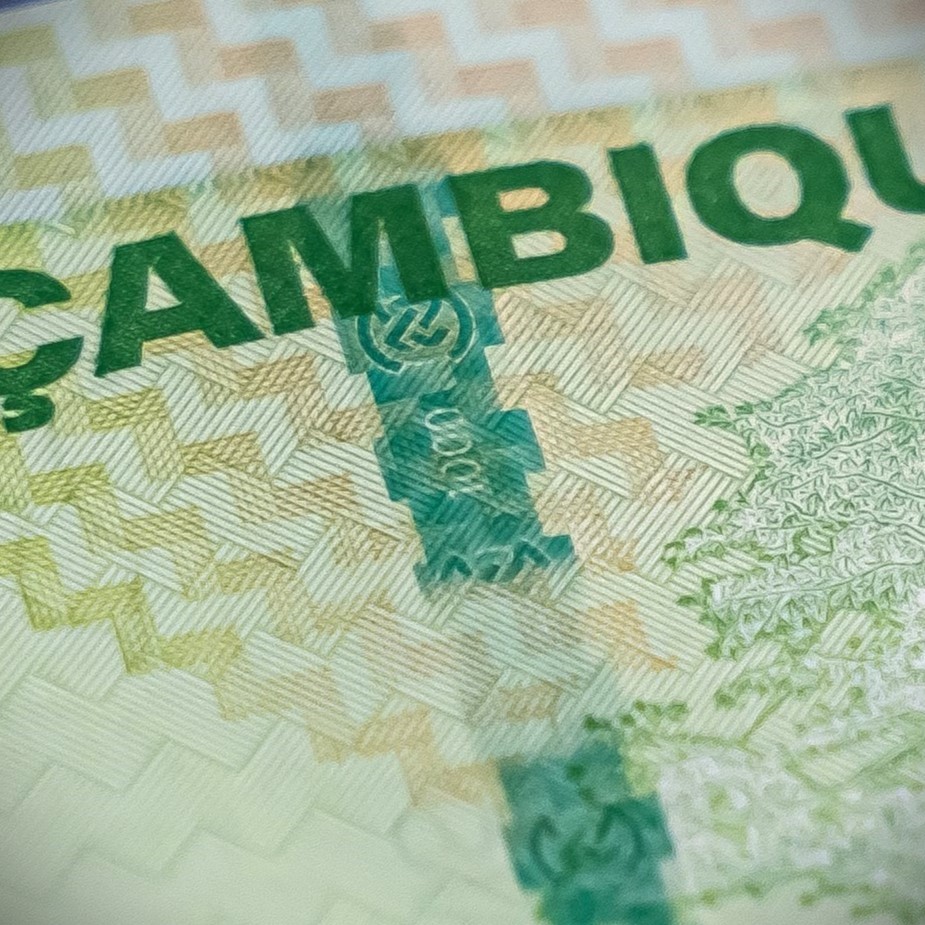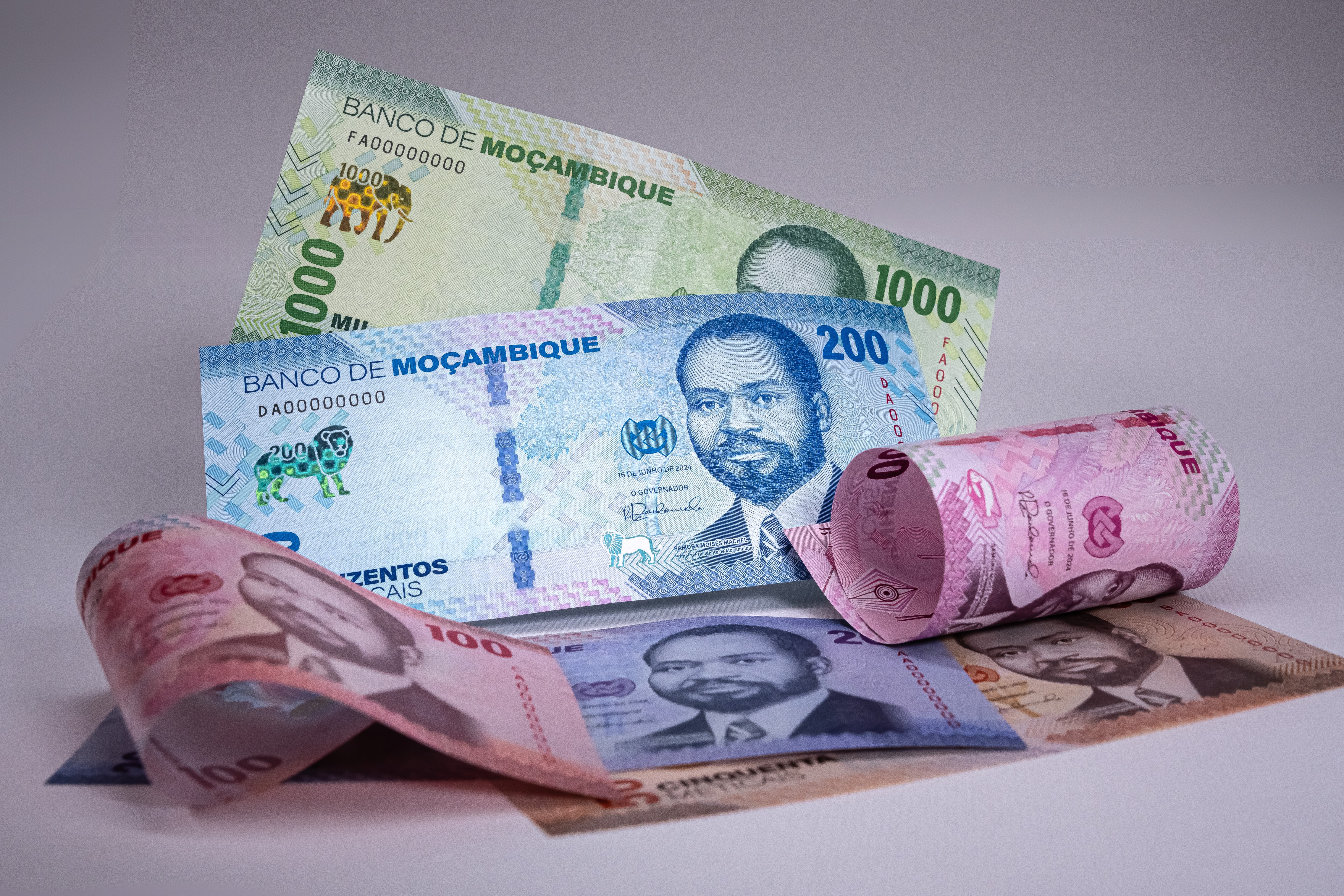Banknotes
A Modern Approach to Modern Upgrades
New Banknote Series in Mozambique
In June 2024, Banco de Moçambique issued a new series of banknotes printed by Crane Currency. This marks a trend in banknote design. Previously, central banks might have addressed new counterfeiting threats with a simple upgrade of security features. Today, central banks are instead embracing a sophisticated approach to banknote modernization.
This modern approach involves making fuller use of the latest security features without creating entirely new designs. The result are modern upgrades that blur the line between a security upgrade and a new banknote design.
For central banks and banknote designers, this trend leads to more challenging and rewarding projects. It is also driving deeper changes in how central banks organize banknote procurement and design processes.
|
The new 20, 50 and 100 metical in Mozambique are printed on polymer plastic supplied by CCL Secure, while the higher denominations, the 200, 500 and 1000 metical on cotton paper from Crane Currency. |
Defining Upgrade vs. New
All central banks inevitably face the question of whether to upgrade their banknotes or create entirely new designs. While new designs can be driven by political or economic changes, it is the need for increased security that drives nearly all upgrades. Upgrading banknotes, as opposed to creating new designs, promotes expediency and reduces risk by avoiding the selection of new portraits and motifs.

Traditional approaches to upgrading saw central banks making the fewest changes possible. The addition of a demetallized security thread to US Currency in the early 1990s offers a good example. The embedded thread did not change the appearance of the banknotes. It acted like a watermark, being invisible in reflected light, thus defeating ‘scan and print’ counterfeits. But like watermarks, the embedded thread required the public to hold up the banknote to verify it.
Fast-forward two decades, and public security features increasingly aim to eliminate this extra step. Features with ‘triggers’, such as high-contrast movement effects or strong 3D visual cues, are favored. Studies show that these features, like RAPID® Vision and MOTION SURFACE®, allow the public to verify banknotes very accurately and quickly in various lighting conditions, both bright and dim.
These types of features are replacing commodity-grade security features, such as colorshift threads, and are redefining how central banks approach security upgrades.
New Mozambique Banknotes: Example of A Modern Upgrade
The public recognizes the familiar. Upgraded banknotes leverage our familiarity with primary imagery, colors that correspond to denominations, and even a banknote’s dimensions. Customized security features add new effects that breathe new life into the familiarity of banknotes.
Skilled banknote designers use modern features that support collaborative customization as an elegant and effective means of reinforcing the security message that all banknotes seek to deliver.

The new series of Mozambique banknotes is a fine example of a modern upgrade. The result is a family of banknotes that are secure, attractive, and familiar. The brilliant appearance of the new banknotes is boldly different from the previous series, showcasing eye-catching RAPID® HD security threads, while maintaining the portrait, dimensions and motifs on both sides of the notes. Even the helpful color-coding of each denomination remains unchanged, but now appears brighter and more purposeful.
The Hidden Step – Process Simplification
Mozambique is not alone in embracing the trend of modern upgrades. The central Asian nation of Kyrgyzstan recently introduced its new banknote series, another example of modern upgrading. Both new series included a hidden step: modernizing the banknote procurement process used to create them.
The National Bank of Kyrgyz Republic’s management of its banknote upgrade was recognized with a RACE Award, presented by the Mint and Print Conference in 2023. ‘Recognized As a Collaborative Endeavor’, the RACE Award called attention to the Bank’s process which delivered expertly upgraded banknotes and a new method of banknote procurement and design. This process used customized, well-integrated security features and dual supplier qualification to meet unique contingency requirements.
Similarly, Banco de Moçambique undertook its own hidden steps. Recognizing that upgrading the banknotes required an upgrade in the procurement process, BDM Governor Zandamela identified during Public First 2023 numerous process changes needed to modernize the national currency. Seeking assistance from other institutions, notably the central bank of Norway, the Governor emphasized streamlining processes to identify and select effective security features and engage with experienced, creative suppliers.

These changes, implemented over a year before the issuance of the new banknotes, improved the tendering and procurement process and reduced the number of currency suppliers from seven to two.
Fewer But Stronger, Customized Security Features
Modern banknote upgrades use fewer but stronger, customized public security features. This simplification in banknote design uses complex, customized features to reinforce the elements most familiar to the public. By modernizing traditional imagery, the national currency – and by extension, the central bank – is rightly seen as progressive and pragmatic.
This simplification is also reflected in the processes used to achieve modern upgrades. Improved processes streamline central bank procedures to deliver more value and better results. While complexity remains, improved processes, as embraced by the central banks of Kyrgyzstan and Mozambique, use best practices to reduce process steps and time, allowing central banks to achieve great results.

